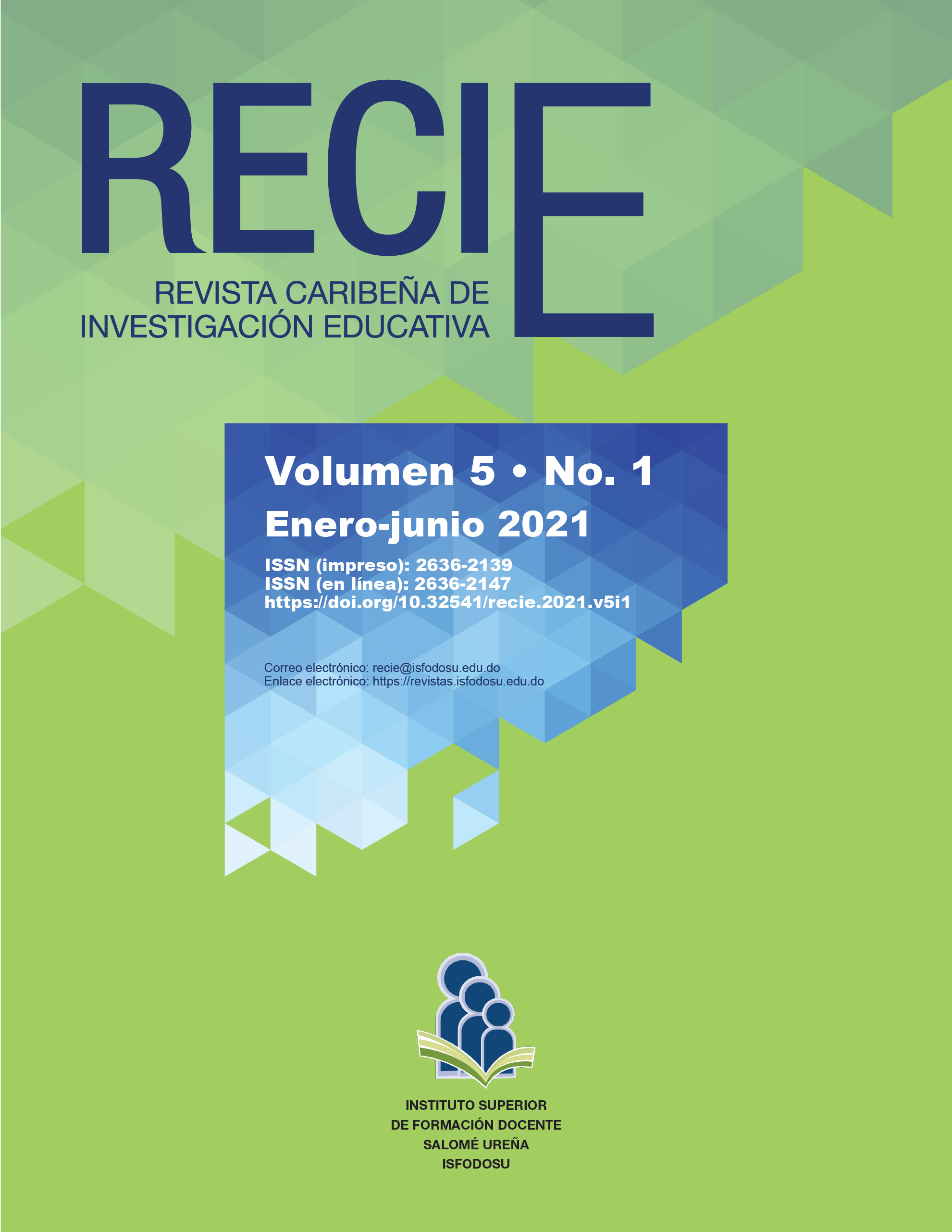Flipped Classroom as a Teaching Method in the Didactic Unit Chemical Reactions of the Fifth Grade of the Dominican Secondary Level
Authors
Juan De Dios Domínguez-Liriano
Universidad ISA
[email protected] https://orcid.org/0000-0002-3036-9293Detalles
Published
Abstract
The Flipped Classroom is an approach that allows students to obtain information in a time and place without physical presence of the teacher, thus changing their traditional roles. In the chemistry teaching process, teachers are forced to teach content, which due to lack of time, does not meet established curricular parameters, affecting student development, causing confusion and misinterpretation. The objective of this research is to evaluate the impact of the implementation of the Flipped Classroom, as a teaching method for cognitive development in the didactic unit Chemical Reactions of the Dominican secondary level students. This study is carried out under the quantitative approach, aimed at fifth-grade students at the secondary level, which a sample of 58 pupils is extracted, divided into two groups (control group and experimental group), from Educational District 08-05, characterized by the application of the new Dominican Curricular Design and the implementation of the Digital Republic program. The techniques used are observation and survey, using the rubric, checklist, log, diagnostic test and evaluation post-test as instruments. The results show that the averages obtained in the post-test by the experimental group in each of the indicators are higher compared to the averages presented in the diagnosis, in addition to also exceeding the final results of the control group, evidencing that the Inverted classroom it has a positive effect on the development of cognitive abilities of learners.
Keywords
How to Cite
Downloads
Metrics
References
Bastidas, T. B. (2020). Aplicación del modelo pedagógico: Aula invertida y su incidencia en el aprendizaje significativo de química en los estudiantes del primer año de B.G.U. de la U.E.M. “Sebastián de Benalcázar” de la ciudad de Quito, período 2018-2019 (tesis de maestría). Universidad Tecnológica Iberoamericana, Quito. https://r.issu.edu.do/l?l=6744LY
Bergmann, J., & Sams, A. (2012). Flip your Classroom: Reach Every Student in Every Class Every Day. Colorado: ISTE.
Broman, K., & Johnels, D. (2019). FFlipping the Class – University Chemistry Students’ Experiences from a new Teaching and Learning Approach. Chemistry Teacher International, 1(1), 1-8. https://doi.org/10.1515/cti-2018-0004
Chaljub Hasbún, J. (2017). El b-Learning y la clase para el desarrollo del aprendizaje activo, la autogestión y el pensamiento crítico universitario. Cuaderno de Pedagogía Universitaria, 13(26), 36-47. https://doi.org/10.29197/cpu.v13i26.262
Cruz C., L. M. (2018). Impacto del uso de las TICs en la educación superior dominicana. Revista Rido. https://r.issu.edu.do/l?l=687QP5
Eichler, J. F., & Peeples, J. (2019). Flipped Classroom Learning Environments in General Chemistry: What is the Impact on Student Performance in Organic Chemistry? ACS Symposium Series, 1322, 171-189. https://doi.org/10.1021/bk-2019-1322.ch010
Eldy, E. (2019). Inverted classroom improves pre-university students understanding on basic topic of Physics: The preliminary study. Journal of Technology and Science Education, 9(3), 420-427. https://doi.org/10.3926/jotse.599
Flavell, J. H. (1985). El desarrollo cognitivo. Universidad de Stanford: Prentice-Hall.
Joksimovic, D., Veg, A., Simonovic, D., Regodic, M., Sinikovic, B., & Gubeljak, N. (2019). Implementation of inverted classroom methodology in 3D modeling course. FME Transactions, 47, 310-315.
Ministerio de Educación (2016). Diseño Curricular Nivel Secundario, Segundo Ciclo. Santo Domingo. https://r.issu.edu.do/l?l=677vKb
Ministerio de Educación (2017). Informe curricular de pruebas nacionales, Ciencias de la Naturaleza. Informe curricular de los resultados de las Pruebas Nacionales, primera y segunda convocatorias. Departamento de Pruebas Nacionales, Santo Domingo. https://r.issu.edu.do/l?l=6766rc
Ministerio de la Presidencia (2020). República Digital. Santo Domingo. https://bit.ly/2KxPtdi
Muñoz, S. A. (2014). Aula tradicional vs aula invertida. España: Procomún. https://r.issu.edu. do/l?l=709h2L
Piaget, J. (1970). La teoría de Piaget: Monografías de infancia y aprendizaje (pp. 703-732). Nueva York: John Wiley and Sons.
Quiroga, A. (2014). Observatorio de Educación: Definición de aula invertida. Politécnico Gran Colombiano.
Salazar, J. C. (2019). Aula invertida como metodología educativa para el aprendizaje de la Química en Educación Media [tesis de maestría. Universidad de la Costa CUC]. Colombia. https://r.issu.edu.do/l?l=688cF6
Sánchez-Cruzado, C. (2017). Flipped Classroom. La clase invertida, una realidad en la Facultad de Ciencias de la Educación de la Universidad de Málaga [tesis doctoral. Universidad de Málaga]. Málaga.
https://r.issu.edu.do/l?l=68129h
Sierra, E. J., Dimas, J. M., & Flórez, E. P. (2018). Evaluación del uso del método Flipped Classroom o aula invertida en el aprendizaje de la química: Estudio de caso en la Institución Educativa Lacides C. Bersal de Lorica. Revista Tecné, Episteme y Didaxis (número extraordinario), 1-9. https://r.issu.edu.do/l?l=6826lP
UNESCO (2016). Innovación educativa. Lima: Unesco. https://r.issu.edu.do/l?l=710Uvd
Woolfolk, A. (2010). Psicología educativa. México: Pearson Educación de México.
Yarleque, J. V. (2018). Flipped classroom y el efecto en las competencias transversales de los alumnos del curso de electricidad electrónica [tesis de grado. Universidad Peruana Cayetano Heredia]. Perú. https://r.issu.edu.do/l?l=684v7o
Section
License
Copyright (c) 2021 Caribbean Educational Research Journal (RECIE)

This work is licensed under a Creative Commons Attribution-NonCommercial-NoDerivatives 4.0 International License.
